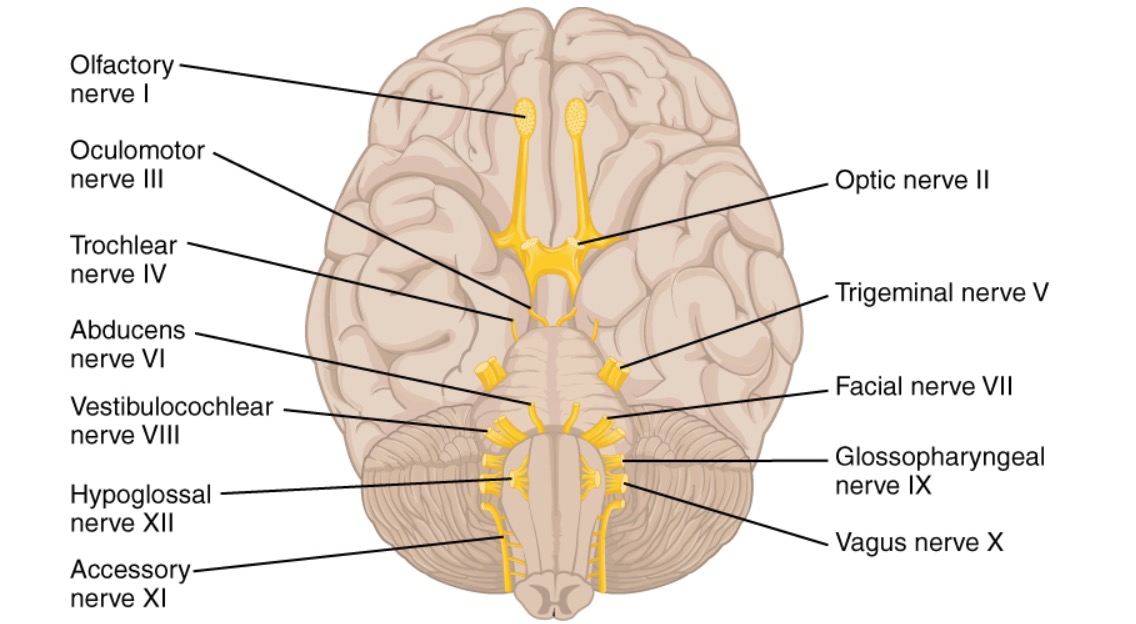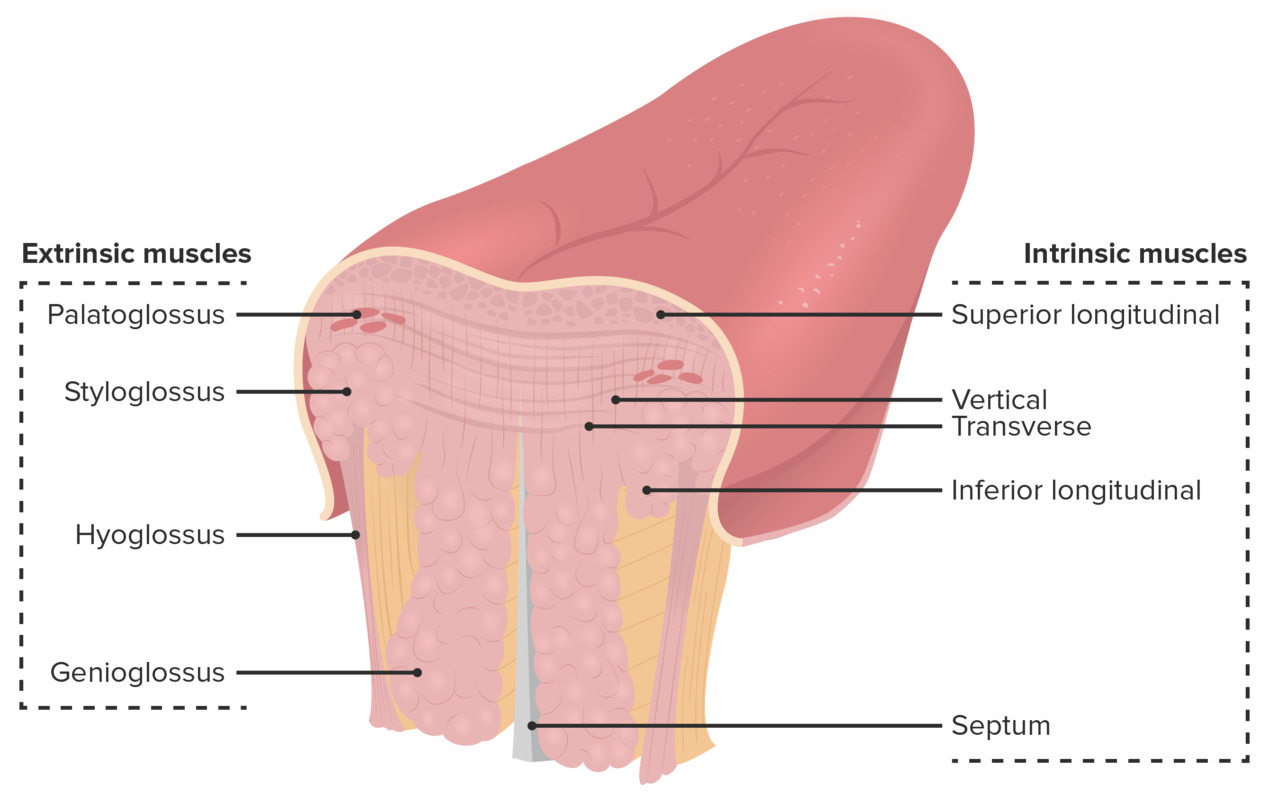Playlist
Show Playlist
Hide Playlist
Cranial Nerve IX: Glossopharyngeal Nerve
-
Slides 8 CranialNerves 2 BrainAndNervousSystem.pdf
-
Reference List Anatomy.pdf
-
Download Lecture Overview
00:00 Next is the glossopharyngeal nerve, cranial nerve number IX. I want you to understand its functional components. 00:08 It has several. General visceral afferent is conveyed in the glossopharyngeal. It also conveys special afferent fibers. Thirdly, general somatic afferent fibers are conveyed through this cranial nerve. 00:26 Fourthly, general visceral efferents are conveyed. Then lastly, because the glossopharyngeal nerve innervates the third pharyngeal arch during development, musculature derived from this arch will be innervated by the glossopharyngeal. Thus, it conveys branchial efferent fibers. The glossopharyngeal nerve is transmitted through the jugular foramen. 00:54 With respect to the general visceral afferent, this conveys sensations from the carotid body and the carotid sinus that are located here in the bifurcation or angle of the bifurcation of your common carotid artery. Then this is your internal carotid. 01:14 Here’s the carotid sinus. The body is just over here as a small little yellow dot. With respect to its special afferent nerve fibers, these are conveying taste from the posterior one-third of the tongue. That is shown in through here. The important take home message is, facial does the anterior two-thirds, glossopharyngeal for taste does the posterior one-third of the tongue, so it’s duly innervated for taste. General somatic afferents and so this is just general sensations, the glossopharyngeal conveys just general sensations from the posterior third of the tongue. The palatine tonsils, sensations from these structures, here is one on the right side, would be conveyed through this nerve. Sensations from the oropharynx shown in through here are also conveyed through this functional component. Lastly, the mucosa of the middle ear, pharyngotympanic tube and mastoid air cells also have sensations conveyed through this functional component. The general visceral efferent is simple. It just goes to the parotid gland. It does so via the otic ganglion. The otic ganglion is shown right in through here. Then here is your parotid gland that has been highlighted. The connection from glossopharyngeal nerve to the otic gland to the parotid, the mnemonic there is GOP, G-O-P, glossopharyngeal, otic ganglion, and then to your parotid gland for secretion. Branchial efferent, here we see a muscle highlighted. This is running from the styloid process to the pharynx. This is your stylopharyngeus. This muscle is derived from the third pharyngeal arch. 03:35 Clinical considerations that you should know with respect to the glossopharyngeal nerve would be damage to this nerve along its path could cause loss of taste to the posterior one-third of the tongue. 03:49 You could have a loss of sensation from the soft palate which would result in the loss of gag reflex. 04:01 Pain can also be a clinical consideration with glossopharyngeal nerve palsy. Some of the causes of these clinical considerations would be a tumor, inadequate blood flow leading to an infarction, and in some cases, there’s a compression by an artery that’s pulsating on the nerve causing demyelination.
About the Lecture
The lecture Cranial Nerve IX: Glossopharyngeal Nerve by Craig Canby, PhD is from the course 12 Cranial Nerves and Their Functions.
Included Quiz Questions
Branchial efferent fibers of the glossopharyngeal nerve innervate the musculature derived from which of the following pharyngeal arches?
- 3rd pharyngeal arch
- 2nd pharyngeal arch
- 6th pharyngeal arch
- 1st pharyngeal arch
- 4th pharyngeal arch
From which structure do general visceral afferent fibers of the glossopharyngeal nerve convey sensory information?
- Carotid body
- Aortic body
- Aortic sinus
- Heinz body
- Mammillary body
Which of the following statements accurately describes the innervation of the tongue?
- The glossopharyngeal nerve is responsible for the special (taste) afferent innervation of the posterior one-third of the tongue.
- The facial nerve is responsible for the afferent innervation of the posterior two-thirds of the tongue.
- The glossopharyngeal nerve is responsible for the special (taste) afferent innervation of the posterior two-thirds of the tongue.
- The glossopharyngeal nerve is responsible for the general somatic afferent innervation of the anterior two-thirds of the tongue.
- The trigeminal nerve is responsible for the special (taste) afferent innervation of the anterior two-thirds of the tongue.
Customer reviews
3,0 of 5 stars
| 5 Stars |
|
0 |
| 4 Stars |
|
0 |
| 3 Stars |
|
1 |
| 2 Stars |
|
0 |
| 1 Star |
|
0 |
Nucleus must be introduced and explain the complete course of the nerve .





